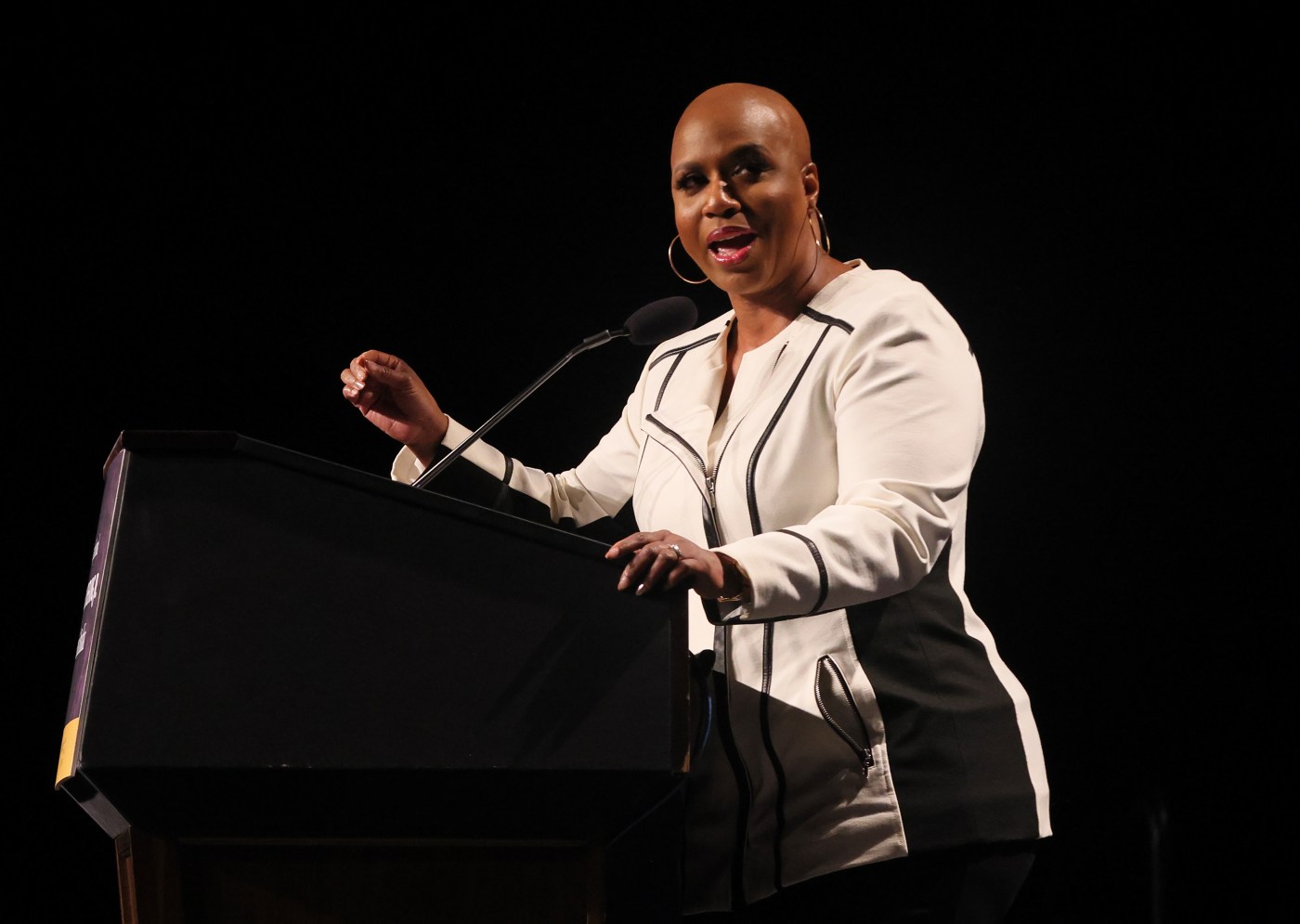
Gaskin: Banner days to celebrate Women’s History Month
“As a longtime champion of women and girls, I think it is important to recognize Black women have been fighting to make Boston and the world a better place for centuries. This not only honors our past as Black women, but it provides role models for our girls, who are our future change makers.” —Rep. Ayanna Pressley on the Black Women Lead project
This is my first year celebrating Women’s History Month with the Black Women Lead project, which I started in 2019 and executed in 2023. The collection honors 212 of Boston’s most admired, beloved, and iconic Black women changemakers, including abolitionists, suffragists, underground railroad workers, doctors, lawyers, judges, professors, elected officials, and community activists. They represent different faith traditions, social classes, political affiliations, and sexual orientations. Their influence touched arts and culture, legislation, health, education, sports, business, community building, and raising a generation of leaders.
Each day, 25,000 people view portraits of these women on banners along a two-mile stretch of Blue Hill Avenue. People cheered when they saw the banners going up. Residents said the banners beautified the neighborhood. Students at Mother Caroline Academy have said it is inspiring to see the images as they walk to and from school. I have touched more lives through this project than through anything else I have done, and I am moved by the engagement and happiness the project has brought to so many people.
It was exciting to hear people who experienced the project describe it as “wonderful,” “amazing” and “beautiful.” Some said the exhibit gave them goosebumps; others said it brought them to tears or made them feel a sense of Black joy, Black pride, and Black excellence. Family and friends of the honorees appreciated that their loved ones were recognized for their commitment. People found ways to identify with the project, such as being from the same neighborhood, church, or profession as an honoree. Many were glad to see nurses, police officers, hairdressers, and librarians recognized, as such people don’t often make it onto lists of the most influential, powerful, or richest.
Reading about the women was one thing but meeting them was an honor. Some of these women are over 90 and still going strong. I learned the many ways these women made Boston better simply by going about their daily lives as role models. As teachers in multiple disciplines, they poured their life into their students and served as mentors. They volunteered in houses of worship, sororities, community organizations, social and women’s clubs. They were leaders in government, business and civic society. They provided childcare, foster care, medical and mental health care to a population that needed it. They all did their part, and that is how we have advanced as a people.
To be honest, I was surprised by how honored the women were to be selected. After all, many of them had impressive careers, had reached the top of their professions, and had already accumulated countless other honors and awards along the way. Some were Hall of Famers, Emmy and Grammy winners, or MacArthur fellows. What’s one more award from a tiny community-based organization? But honorees said the recognition meant a lot specifically because it came from the community and their peer group, fellow women warriors.
It was a privilege to work with Black artists such as Kamali Thornell, Brianna Young, and Velicia Gourdin, selected through a global search.
The project’s art was inspired by the hip-hop concept of “found space,” in which venues such as sidewalks and subway cars become display sites. We hung our Black Women Lead banners on light poles that no one else was using. Art historians would recognize the influence of contemporary artists such as Andy Warhol in the portrait design.
As an artist, this project is my Christo installation, as in “The Gates” in New York City. The outdoor exhibit provides placemaking for Grove Hall, promotes Black art, honors Black women, and inspires. It is in memory of my grandmother Maxine Moss and my great aunt Anna Moss, who both graduated from college during the Great Depression. They too were Black women leaders in their day.
It wasn’t until I experienced the exhibit myself that I appreciated the opportunity to create the largest public art project in Boston. I feel privileged to have been able to lead a project like this without a prior track record of producing public art. At a cost of over $100,000, the project was partially funded by the Kraft family through their foundations, with American Rescue Plan Act funds designated by Mayor Michelle Wu for beautification projects and many donors.
I’m not a history buff, but through this project, I became a public historian. The hours of meticulous research paid off in creating a well-curated collection. It was fascinating to learn about Black women’s history through the project. I discovered new narratives about women and Blacks that I hadn’t seen in textbooks or the media. The project presented a wonderful opportunity to preserve women’s and Black history. Our honorees embody great stories of resilience and success, starting with women who began their lives in slavery. During the project, I’ve learned a lot about what Black women have had to overcome. Langston Hughes expressed it perfectly in his poem “Mother to Son,” when he wrote, “Life for me ain’t been no crystal stair.”
Through the project, I also learned about my own male bias. When speaking with a teacher who was using the project content to create curriculum for elementary school students, I asked, “Do you think elementary school boys will want to learn about women leaders?” Then it struck me: Why did I think it was normal for girls to learn about male leaders but not vice versa? Perhaps if young boys saw more images and heard more stories of women leaders, they would learn to see women as equals.
Finally, the banners remind me of a Bible story in which the Israelites marked their miraculous crossing of the Jordan with stones, so future generations would know that the power of God had made it possible (Joshua 4). The banners are a reminder that the power of God in their lives helped many women overcome the barriers they faced. The women’s images looking down on us from the light poles also remind us of Hebrews 12: “we are surrounded by such a great cloud of witnesses.”
For all that I have learned through the Black Women Lead project, and all that it has contributed to our community, I want to thank everyone who helped make the project and the public exhibit possible. Special thanks to Mother Caroline Academy and The Black Women Lead Honorary Committee — Governor Maura Healey, Lt. Governor Kim Driscoll, Senator Elizabeth Warren, Attorney General Andrea Campbell, Congresswomen Katherine Clark and Ayanna Pressley, and Mayor Michelle Wu. Now it’s time to raise money to honor the next cohort of Black women leaders.
Ed Gaskin is Executive Director of Greater Grove Hall Main Streets and founder of Sunday Celebrations.


